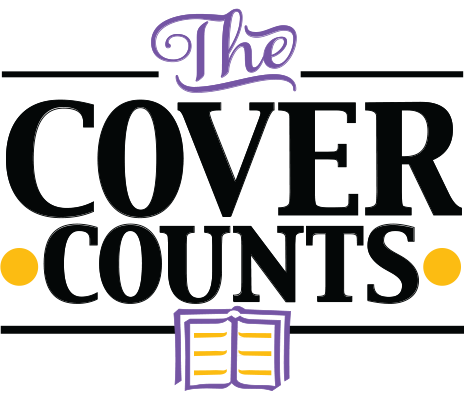So, let’s talk stock image licensing for a sec
![]()
(if you’re looking for a more in-depth look at stock image copyright issues click here)
One of the things I’ve noticed in many online groups where book cover designers hang out is that a lot of people haven’t been exposed to very much information about Copyright. So I thought I’d lay out some of the basics. Note, I am not a copyright lawyer, nor do I play one on TV. But I have been designing for more than 25 years and doing mostly book covers for almost 10. I’ve studied copyright, and I review images for one of the major stock sites. So I know a thing or two. But, still, you all know not to take my words as legal advice, right? Good. So, we can move along then. 😉
Book covers fall within the standard licensing terms. But when an author starts to use our designs for marketing and promotion, we need to make sure they understand the limitations of the standard license. Read ahead to get a better understanding of when an extended license would generally be required.
(note: Shutterstock recently started allowing any printed paper product with their standard license. So, if you have a standard license from Shutterstock, posters, bookmarks, character cards, postcards, etc: anything printed ON PAPER does not need an extended license. Remember this is ONLY if the standard license was purchased from Shutterstock. As far as I’m aware, If you’ve purchased a standard license from ANY other source you’ll need an extended license as illustrated below. You’re always safer with an extended license if you’re going to use an image for any kind of distribution. But if you’ve purchased a standard license elsewhere and you KNOW you will never put a design on merchandise, it could be worthwhile to purchase a second standard license from Shutterstock)
When do your clients need an extended license?
Here is how I usually explain it:
You and I are both selling white T-shirts for $5 each. They are of an equal value…. a plain white T-shirt.
If you put a picture on yours, they are no longer equal value.
You can now sell your decorated T-Shirt for more than I can sell my plain T-shirt.
Therefore the increased value of the T-Shirt is solely a result of the image you put on it.
You need the extended license because people only want YOUR T-shirt over MY T-shirt because of the picture..

This little girl picks a box because she wants the cereal inside. Not because she wants the picture on the box. The standard licensing works! (londondeposit|deositphotos)
If you and I are both selling a product
(book, cosmetics, candles, computer software, breakfast cereal….etc)
The value is the breakfast cereal… or the cosmetic… or the software… etc.
Putting a picture on its packaging or label might increase its visibility in the market, but people aren’t buying it because they want the packaging; they’re buying it because they want what’s inside. THEN the standard licensing is acceptable.
The product and the value of your client’s BOOK is the story. Because the book cover is the packaging. A standard license is appropriate for packaging.
.
So, how do authors promote their book?

Make sure that the purpose for distribution of paper products is your information and not just the images from your book cover. (OlhaKostiuk|Depositphotos)
Paper products can be tricky.*
We’re talking business cards, character cards, bookmarks, brochures, etc…
if the VALUE is the information on/in it, and the image is the “packaging” for that information, then the standard licensing is acceptable.
So, if you are distributing the piece of paper in order to give people your information, that’s standard licensing. If the reason for distributing the paper is because it has pretty pictures on it, then you need the extended license.
Most character cards fall under this category, as would bookmarks that only have the book cover or images from the design.
BUT if you put the same info on either side of a bookmark or character card that you would on a business card, the purpose for the distribution is the information and not the pretty pictures. Think about information like website address, “find me on facebook”, “Available on Amazon” etc.
* See note in intro regarding new Shutterstock policies
![]()

Promotional objects like these only get their increased value from the image. Buy an extended license for anything of this nature. (Kenterville|Depositphotos)
What about cool products to put book covers on to give away or sell?
An extended license is necessary for ANY product where the image is what gives it more or different value over another of the same type of products.
As a gauge, consider ANYTHING that Zazzle or CafePress sells as needing extended licensing (though it’s not limited to just those products).
This applies even if you aren’t creating them as POD products. Your means of distribution doesn’t matter. You could give them away or sell them, and in most cases, you’d still need the extended license.
(note: There ARE some sources, that allow giveaways under the standard license. So you can look for giveaway related language in licensing terms to be sure)
Final Notes: Extended licenses typically cost anywhere from $80-250 depending on where you’re licensing images. Not unexpectedly, Depositphotos falls on the lower end and iStock falls on the higher end with most of the typical stock sources falling somwhere in between. If your clients decide that purchasing the extended license is something they want to do, it might be worth it to shop around and see if the images can be found on one of the less expensive sites, regardless of where you licensed them in the first place. 🙂
You will find sites out there with variations on rules for extended licensing. Some are more lenient than others.
So make sure to get familiar with the licensing and fees of ALL stock sources that you use.
.
More Resources & Info
Click here to see the rest of the Copyright for Book Cover Designer Series
• Stock image copyright basics
• When do you need an extended license?
• Author and Series Logos
• Links to Licensing details for all the main stock sources
Copyright laws are extremely extensive and confusing. You can find more specific details about what images can and cannot be used commercially at the links below. I highly recommend taking a look so you can make sure you protect yourself. There are some surprising things that can’t be used commercially in any way.
Shutterstock Known Image Restrictions
AdobeStock Known Image Restrictions
All three have much of the same info, just in different formats. Use the one where you find the most information and feel is the easiest to navigate.
LEARN how to spot the pitfalls
before you fall into one that you can’t get out of.
Have something to say? Your comments are welcome!



